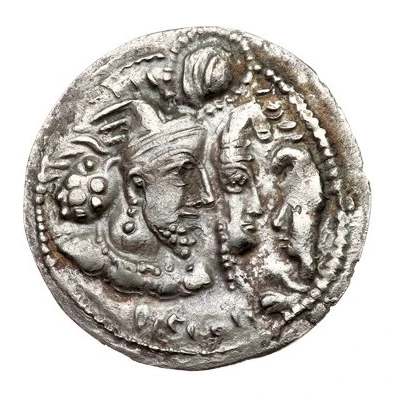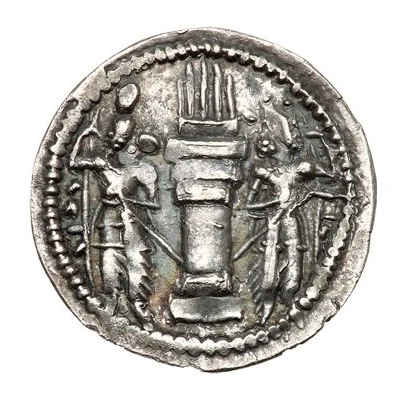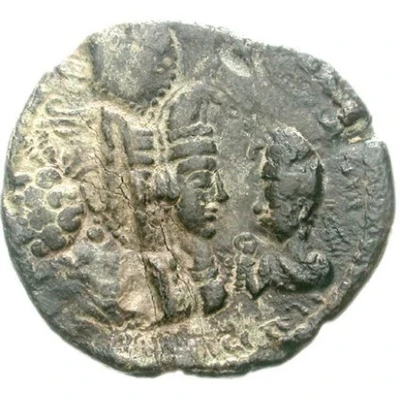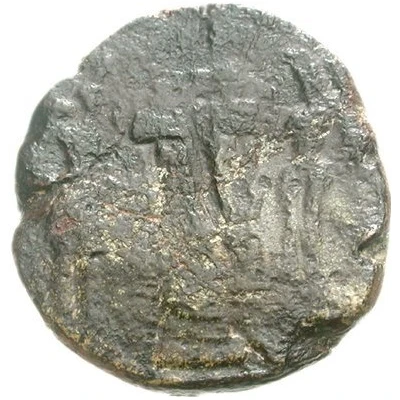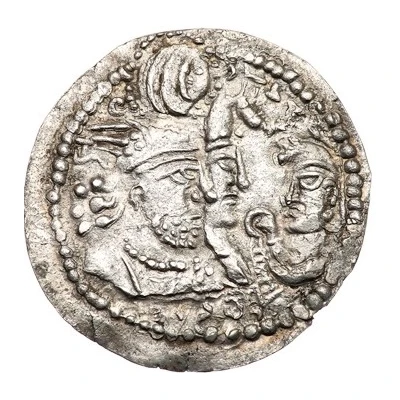
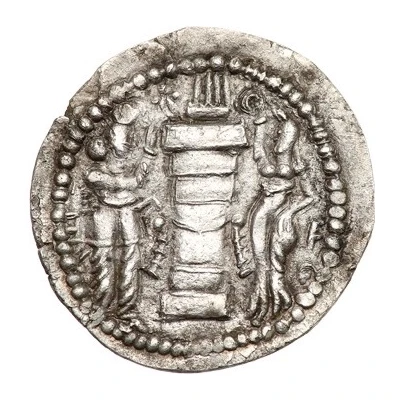

Obol - Varhran II
| Silver (.900) | 0.69 g | - |
| Issuer | Sasanian Empire (Sasanian Empire (224-651)) |
|---|---|
| Emperor | Bahram II (274-293) |
| Type | Standard circulation coin |
| Years | 276-293 |
| Value | Obol (1⁄72) |
| Currency | Dinar (224 AD-651 AD) |
| Composition | Silver (.900) |
| Weight | 0.69 g |
| Shape | Round (irregular) |
| Technique | Hammered |
| Demonetized | Yes |
| Updated | 2024-10-10 |
| Numista | N#87764 |
|---|---|
| Rarity index | 100% |
Reverse
Along the sides of the atasdan are two figures facing the altar. The attendant on the right is a figure of Anahita in a kulah crowend by the head of a bird or winged crown, with the "wreath of power" in his hand. The figure on the left wears the crown of Varhran II and raises his hand (laurel wreath).
Bull-symbol over the flames.
Edge
Plain
Interesting fact
One interesting fact about the Obol coin is that it was used as a form of currency during the Sasanian Empire, which was the last Persian Empire before the Arab conquest. The coin was made of silver and weighed 0.69 grams, which was a significant amount for a coin at that time. Additionally, the coin features an image of King Varhran II, who ruled the empire from 276 to 293 AD. The coin's design and inscriptions reflect the cultural and religious influences of the Sasanian Empire, which was known for its rich art, architecture, and literature.
